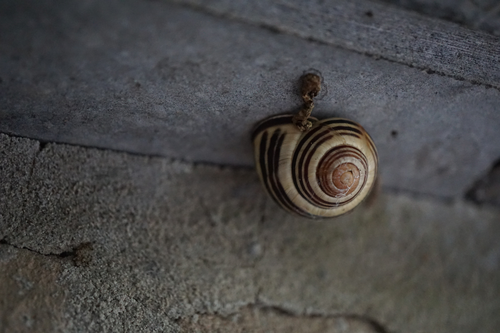
RAE Robbie
Recommendations: 0
Review: 1
Review: 1

Urban Cepaea nemoralis snails are less likely to have nematodes trapped within their shells
Urbanisation linked to a decline in the proportion of snails with trapped nematodes in their shell
Recommended by Alison Duncan based on reviews by Robbie Rae and 1 anonymous reviewerUrbanisation modifies species’ habitats affecting their density, distribution, fitness, and behaviour with knock-on effects for their parasites’ abundance and transmission (Bradley & Altizer 2007). A meta-analysis found that changes in resource provisioning due to anthropogenic change can have both positive and negative effects on parasite infection in wildlife populations, but that feeding on urban waste had an effect of reducing infection, especially for helminths and protozoa (Becker, Streicker & Altizer 2015). Another study found that urbanisation reduced ectoparasite load in birds, but had no effect on endoparasites or avian flu (Reid et al. 2024). These changes may be due to novel diets reducing transmission via predation upon trophic hosts (Becker, Streicker & Altizer 2015) or behavioural, leading to more time available to preen (Reid et al. 2024). Less is known about how urbanisation affects invertebrates (but see Lewthwaite et al., 2024) and their parasites. This is important considering that invertebrates are often intermediate hosts of, and/or vector other parasites.
Recent work has found that snails and slugs can trap nematodes in their shells to prevent infection (Rae 2017). This newly discovered resistance mechanism reveals that the shell serves an immune defence function. It also provides a record of nematode exposure and documents incidences of resistance to infection as the trapped nematode becomes fixed onto the shell surface (Rae 2017). Dahirel and co-authors exploit this to investigate whether snail-nematode interactions change in response to increasing levels of urbanisation (Dahirel et al. 2024).
They explore whether the proportion of Cepaea nemoralis snails with trapped nematodes in their shell changes across an urbanisation gradient. They also explore whether different phenotypic snail traits, notably shell size, colour, band number and fusion explain the likelihood of having trapped nematodes in their shells. An increase in urbanisation was associated with a decrease in the proportion of snails with trapped nematodes in their shells. At the same time larger shells were more likely to have trapped nematodes, but this effect did not change across the urbanisation gradient.
The authors discuss that reduced nematode encapsulation in urban environments may be due to lower encounter rate due to either fewer nematodes in urban environments, changes in snail behaviour reducing exposure, or alternatively that urban snails were less resistant to nematode infection.
It will be interesting to investigate how this resistance mechanism is related to other forms of snail immunity and whether high rates of nematode encapsulation are an indicator of high resistance or high exposure. This will enable nematode trapping to be used as a marker to indicate environments and/or snail populations harbouring high levels of parasitism and further exploitation of museum collections to understand host-parasite interactions in the past (Rae 2017).
References
Becker, D.J., Streicker, D.G. & Altizer, S. (2015) Linking anthropogenic resources to wildlife-pathogen dynamics: a review and meta-analysis. Ecol Lett, 18, 483-495. https://doi.org/10.1111/ele.12428
Bradley, C.A. & Altizer, S. (2007) Urbanization and the ecology of wildlife diseases. Trends Ecol Evol, 22, 95-102. https://doi.org/10.1016/j.tree.2006.11.001
Maxime Dahirel, Hannah Reyné, Katrien De Wolf, Dries Bonte (2024) Urban Cepaea nemoralis snails are less likely to have nematodes trapped within their shells. bioRxiv, ver.4 peer-reviewed and recommended by PCI Ecology https://doi.org/10.1101/2024.03.07.583959
Lewthwaite, J.M.M., Baiotto, T.M., Brown, B.V., Cheung, Y.Y., Baker, A.J., Lehnen, C., McGlynn, T.P., Shirey, V., Gonzalez, L., Hartop, E., Kerr, P.H., Wood, E. & Guzman, L.M. (2024) Drivers of arthropod biodiversity in an urban ecosystem. Sci Rep, 14, 390. https://doi.org/10.1038/s41598-023-50675-3
Rae, R. (2017) The gastropod shell has been co-opted to kill parasitic nematodes. Sci Rep, 7, 4745. https://doi.org/10.1038/s41598-017-04695-5
Reid, R., Capilla-Lasheras, P., Haddou, Y., Boonekamp, J. & Dominoni, D.M. (2024) The impact of urbanization on health depends on the health metric, life stage and level of urbanization: a global meta-analysis on avian species. Proc Biol Sci, 291, 20240617. https://doi.org/10.1098/rspb.2024.0617